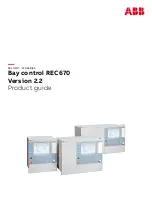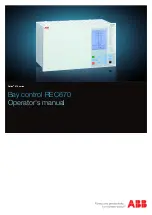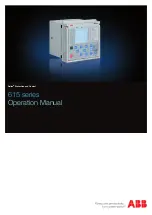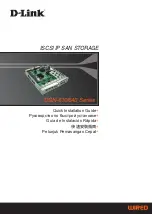
4
5
• Check the polarity of the vehicle battery terminals
before connecting the appliance. Always disconnect
the negative (black) jumper cable first: followed by
the positive (red) jumper cable.
• The ON/OFF switch should be in the OFF position
before connection to a power source or load, when
the unit is charging and when not in use.
• Never allow the red and black clamps to touch each
other or another common metal conductor. This
could cause damage to the appliance and/or create a
sparking/explosion hazard. Always store the battery
clamps in the built-in holders when not in use.
• When using this unit in proximity to the vehicle’s
battery and engine, stand the unit on a flat, stable
surface, and be sure to keep all clamps, cords,
clothing and body parts away from moving parts of
the vehicle.
• This appliance contains a sealed lead-acid battery. It
is recommended that the appliance is laid flat during
storage, use, and recharging.
• Excessive engine cranking can damage a vehicle’s
starter motor. If the engine fails to start after the
recommended number of attempts, discontinue
jump-start procedures and look for other problems
that may need to be corrected.
• Do not use this jump-starter on a watercraft. It is not
qualified for marine applications.
Warning! Burst hazard:
Do not use the unit for
charging dry-cell batteries that are commonly used
with home appliances. These batteries may burst
and cause injury to persons and damage property.
Use the unit for charging/boosting a lead-acid battery
only. It is not intended to supply power to a low-
voltage electrical system other than in a starter-motor
application.
Warning! – Risk of explosive gases:
Working in the
vicinity of a lead-acid battery is dangerous. Batteries
generate explosive gases during normal battery
operation. For this reason, it is of utmost importance
that each time, before using your jump starter, you
read this manual and follow the instructions exactly.
Explosive gas may be vented from the lead acid
batteries when charging and under extreme conditions
battery leakage may occur. Ensure the area is well
ventilated when conducting jump starting and charging
procedures.
• Do not charge the appliance using the 12V connector
when the vehicle is occupied. Ensure the area is well
ventilated.
• To reduce the risk of electric shock, disconnect the
appliance from any power source before attempting
maintenance or cleaning. Turning off controls without
disconnecting the appliance will not reduce this risk.
• Make sure the appliance is disconnected from all
charging power sources before beginning the jump
start procedure.
Warning!To avoid the risk of personal injury or
property damage:
• Make sure that the vehicle is in neutral with the
parking brake applied.
• Make sure that the cables are not in the path of
moving belts or the fan.
Additional safety warnings for
compressors
• For home and car use only. Inflate car and bike tyres,
balls, rafts, swimming pool floats, air mattresses,
and more in and around the home.
• Do not operate the compressor continuously
for extended periods of time (approximately 10
minutes, depending on ambient temperatures), as
it may overheat. In this event, the compressor will
automatically shut down. Immediately turn off the
compressor power switch. Restart the compressor
after a cooling down period of approximately 30
minutes.
• The compressed air from your compressor is
not safe for breathing. Never inhale air from your
compressor or from a breathing device connected to
the compressor.
• Inflate items only to their manufacturer’s
recommendations. Exceeding the pressure rating
could cause them to explode resulting in personal
injury.
• Do not leave compressor running unattended. It
could burst tyres or other items.
• Since the vibration produced by the compressor may
cause it to “walk”, do not operate on a high shelf or
other surface. Operate at ground or bench level.
• Do not modify or attempt to repair. Never drill into,
weld, or make any modifications to the compressor
or its attachments.
• Do not operate compressor when the car engine is
running.
• Operate only with the accessories included or those
rated for 8.27 bar/120 p.s.i. or higher. The use of any
accessory not recommended for use with this tool
could be hazardous.
• Do not play with the tool. High pressure air is
dangerous. Don’t direct air-flow at yourself or others.
• The compressor can become hot during use. Allow
compressor to cool for 30 minutes before storing
away.
• Never carry the compressor by the hose.
• This tool is not intended for use by persons
(including children) with reduced physical, sensory
or mental capabilities, or lack of experience and
knowledge, unless they have been given supervision
or instruction concerning use of the appliance by a
person responsible for their safety. Children should
be supervised to ensure that they do not play with
the appliance.
• Do not use the compressor when the charger is
connected to the mains.
• Only use the adapter supplied.
• The gauge is intended as a guide only. Tyre
pressures should be regularly checked with a
certified gauge.
Additional safety instructions for
batteries and chargers
BATTERIES
• Never attempt to open for any reason.
• Do not expose the battery to water.
• Do not store in locations where the temperature may
exceed 40°C.
• Charge only at ambient temperatures between 4°C
and 40°C.
• Charge only using the chargers provided with the
appliance.
• When disposing of batteries, follow the instructions
given in the section “Protecting the environment”.
• Under extreme conditions, battery leakage may
occur. When you notice liquid on the batteries,
carefully wipe the liquid off using a cloth. Avoid skin
contact.
• In case of skin or eye contact, follow the instructions
below.
Warning!
The battery fluid is a diluted sulphuric acid
and may cause personal injury or damage to property.
In case of skin contact, immediately rinse with water.
If redness, pain or irritation occurs seek medical
attention. In case of eye contact, rinse immediately
with clean water and seek immediate medical
attention.
CHARGERS
The following symbols are found on your mains
charger:
Your charger is double
insulated; therefore no earth
wire is required.
Your charger is a switch mode
power supply unit.
Your charger incorporates
a short-circuit-proof safety
isolating transformer
(inherently or non-inherently)
Indication of correct connection
of your charger.
The charger is intended for
indoor use only.
Your charger meets the Energy
Efficiency Level V standard
for no-load condition electric
power consumption and
average active efficiency of
external power supplies.
Your charger is rated to IP20
degree of protection provided
by the enclosure.
Your charger has been designed for a specific voltage.
Always check that the mains voltage corresponds to
the voltage on the rating plate.
Warning!
Never attempt to replace the charger unit
with a regular mains plug.
Use your charger only to charge the battery in the
tool with which it was supplied. Other batteries could
burst, causing personal injury and damage.
• Never attempt to charge non-rechargeable batteries.
• Have defective cords replaced immediately.
• Do not expose the charger to water.
• Do not open the charger.
• Do not probe the charger.
• The battery must be placed in a well ventilated area
when charging.
Electrical safety
Always check that the power supply corresponds to
the voltage on the rating plate.
• If the supply cord is damaged, it must be replaced
by the manufacturer in order to avoid a hazard.
PERSONAL SAFETY
Always have protective eyewear when using this
product: contact with battery acid may cause
blindness and/or severe burns. Be aware of first aid
procedures in case of accidental contact with battery
acid.
Avoid touching the eyes while working with a battery.
Acid, acid particles or corrosion may get into the eyes.
Have plenty of fresh water and soap nearby in case
battery acid contacts skin.
Remove personal metal items such as rings, bracelets,
necklaces and watches when working with a lead-acid
battery. A lead-acid battery can produce a short circuit
current high enough to cause a severe burn.
Be extra cautious to reduce the risk of dropping a
metal object onto the battery. This might cause sparks
or short-circuit the battery or other electrical part,
which can cause an explosion.
Warning!
Battery fluid is a diluted sulphuric acid and
may cause personal injury or damage to property. In case
of skin or eye contact, follow the instructions below.
• In case of skin contact, immediately rinse with water.
If redness, pain or irritation occurs seek medical
attention.
BDJS450IAU_Manual_091216.indd 4-5
9/12/2016 11:57:45 AM






















